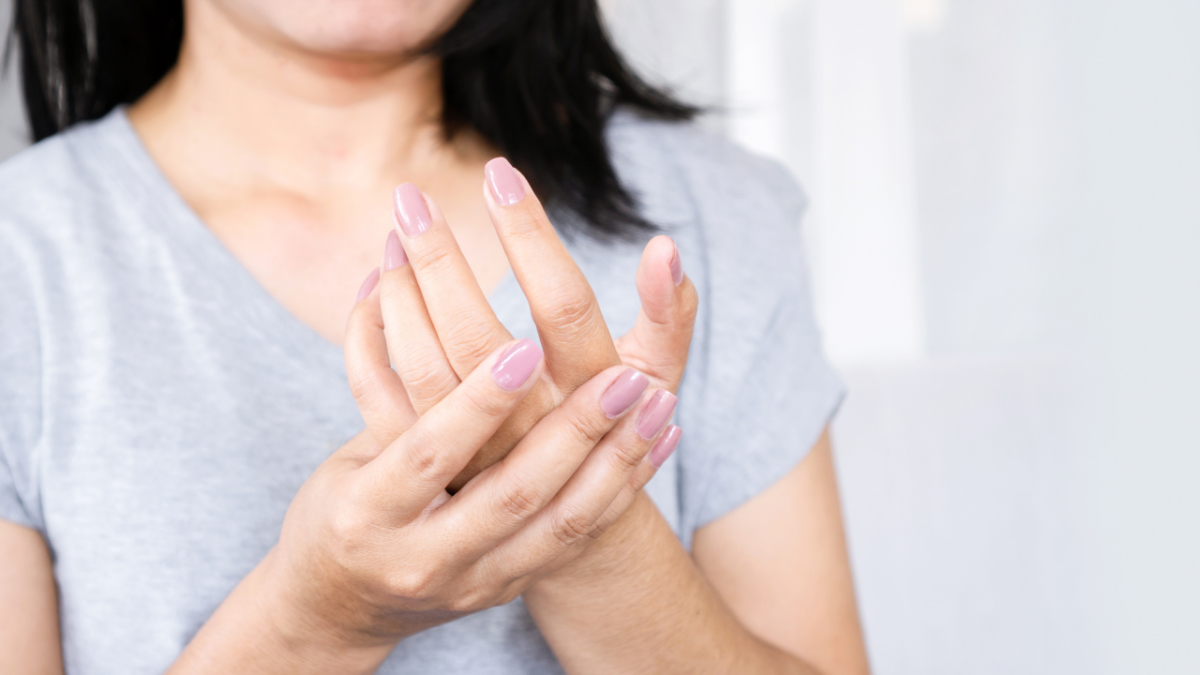Tackling Joint Discomfort During Perimenopause: Practical Tips and Tricks

Are your joints acting up lately? First, let’s talk about why this is happening. Estrogen, that superstar hormone, does more than you might think – including keeping our joints flexible and pain-free. But during perimenopause, estrogen levels start to dip, which can lead to joint discomfort. The joints that often get hit the hardest are your neck, jaw, shoulders, wrists, and elbows, but really, no joint is off-limits.
Symptoms of Joint Discomfort
Joint discomfort during perimenopause can manifest in various ways. Here’s a detailed look at the symptoms to watch out for:
- Stiffness: You might notice a tight, less flexible feeling in your joints, especially after periods of inactivity. This stiffness can make it difficult to get moving in the morning or after sitting for a while.
- Pain: Aching sensations or sharp twinges in your joints are common. This pain can range from mild discomfort to more severe, persistent aches that interfere with daily activities.
- Swelling: Inflammation in the joints can cause them to puff up. This swelling is often accompanied by a warm sensation and tenderness around the affected area.
- Reduced Range of Motion: You might find it harder to move your joints as freely as you used to. This reduction in range of motion can make everyday tasks, like reaching for something on a high shelf or bending down, more challenging.
- Headaches: Tight shoulder muscles, often a result of compensating for stiff joints, can sometimes lead to headaches. These headaches are typically tension-related and can add to the overall discomfort.
What’s Causing All This?
Several things could be behind your joint discomfort:
- Hormonal Changes: The fluctuating levels of estrogen during perimenopause play a significant role in joint health. Estrogen helps to keep our joints flexible and lubricated. When estrogen levels drop, the joints can become stiff and painful.
- Inflammation: Lower estrogen levels can lead to increased inflammation throughout the body, including the joints. Inflammation can cause swelling, pain, and stiffness, exacerbating joint discomfort.
- Aging: As we age, our joints naturally experience wear and tear. The cartilage that cushions the joints can degrade over time, leading to increased friction and discomfort.
- Weight Gain: Hormonal changes during perimenopause can lead to weight gain. Extra pounds add stress to the joints, particularly weight-bearing ones like the knees and hips, increasing the likelihood of pain and stiffness.
- Stress and Fatigue: Perimenopause can bring about increased stress and fatigue, which can negatively impact overall physical health. Stress can lead to muscle tension, further aggravating joint pain, while fatigue can make it harder to stay active and maintain healthy joints.
How to Manage and Reduce Joint Discomfort
Alright, let’s dive into some practical, everyday tips to help those joints feel better.
1. Keep Moving
Staying active is key, but it doesn’t have to be a chore. Here are some fun ways to get moving:
- Walking: Just a daily stroll around the block can work wonders.
- Yoga: Great for flexibility and super relaxing.
- Swimming: A fantastic full-body workout that’s easy on the joints.
- Light Strength Training: Helps build muscles around your joints for better support.
2. Eat Smart
Your diet can play a big role in how your joints feel. Here are some joint-friendly foods:
- Fish and Nuts: Packed with omega-3s, which fight inflammation.
- Fruits and Veggies: Full of antioxidants to keep inflammation at bay.
- Whole Grains: Good for overall health without causing inflammation.
- Lean Proteins: Helps keep your muscles strong and supportive.
3. Stay Hydrated
Keeping hydrated is crucial. Aim for about 8 glasses of water a day – your joints will thank you!
4. Balance Those Hormones
It might be worth chatting with your doctor about hormone replacement therapy (HRT) or other options to help balance your estrogen levels and reduce joint pain.
5. Chill Out
Stress can make everything worse, including joint pain. Try these relaxation techniques:
- Meditation: Just a few minutes a day can help.
- Deep Breathing: Simple and effective for calming your mind.
- Massage: Treat yourself to a massage to loosen up those tight muscles.
6. Consider Supplements
Some supplements can give your joints a boost:
- Glucosamine and Chondroitin: Great for cartilage health.
- Turmeric: Contains curcumin, which is anti-inflammatory.
- Vitamin D and Calcium: Essential for strong bones.
7. Get Your Beauty Sleep
Sleep is when your body repairs itself, so make sure you’re getting enough. Aim for 7-9 hours a night to help reduce pain sensitivity and improve joint health.
Takeaway
Joint discomfort during perimenopause is a common issue, but with the right approach, you can manage it and feel better. Stay active, eat well, keep hydrated, and don’t forget to relax. And remember, you’re not alone – plenty of women are experiencing the same thing, and sharing tips and support can make a big difference.
